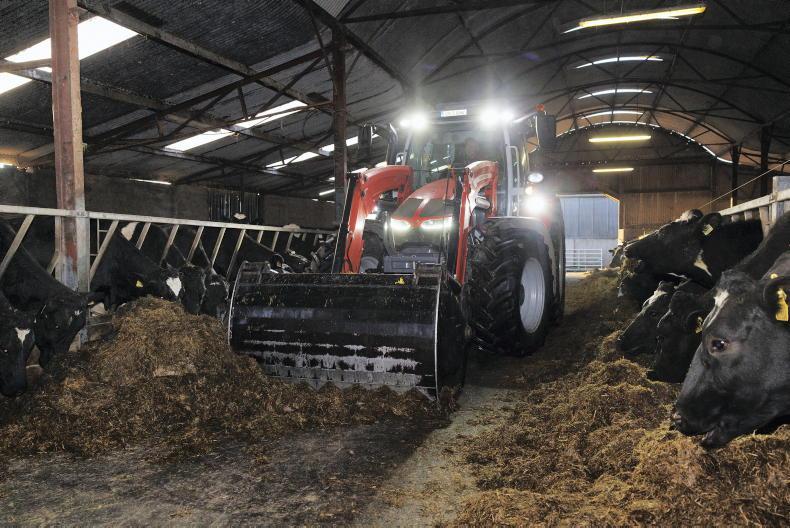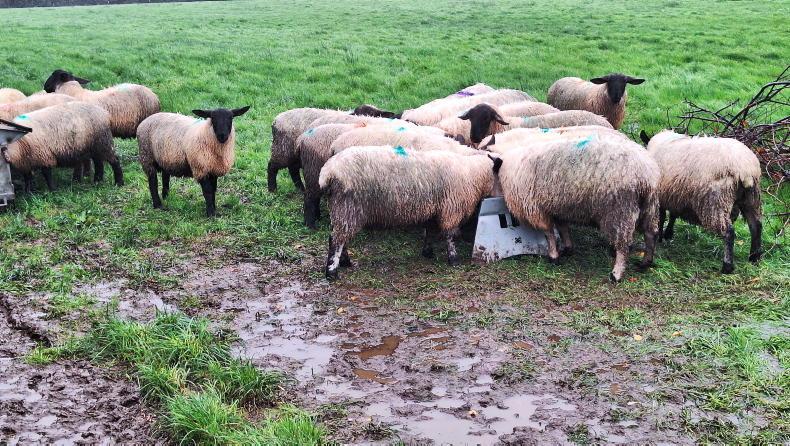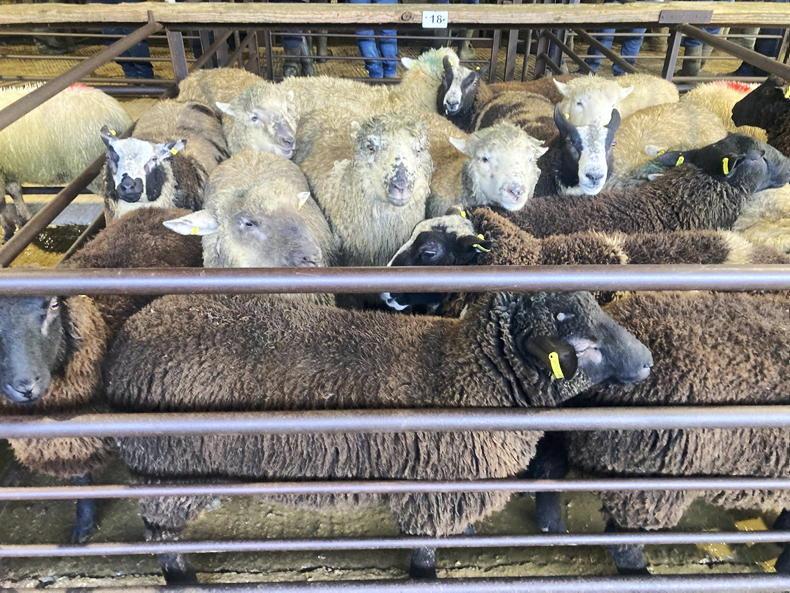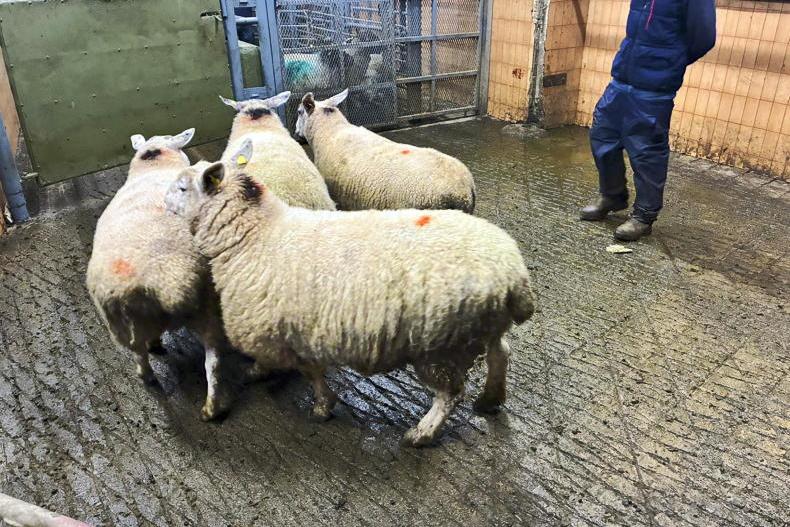Buying demand for store lambs has increased over the past fortnight, boosting prices by £2 to £5 per head for good quality, short keep animals.
While demand normally builds towards a seasonal peak in early autumn, the recent upward momentum has been fuelled by improved grass growth and ground conditions.
The downturn in beef price has also seen buyers switch to lambs as a way of utilising autumn grass.
Prices
Heavy fleshed lowland cross lambs around 40kg liveweight are currently returning prices between £90 and £92, easing back towards £82 to £89 for lambs weighing 36kg to 38kg.
Lighter lambs and animals with a strong hill breeding influence are making from £65 to around £80, depending on weight and appearance.
Budget
To calculate potential returns, it is important to be realistic about the weight gains that will be achieved and when stock will be finished.
Good quality Suffolk and Texel cross lambs are capable of gaining 175g to 200g of daily liveweight from a grass only diet in August.
As grass dry matter declines, liveweight gain will more typically fall to 150g/day in September, provided animals are grazed on good quality swards.
By October, weight gains will likely dip to 100g/day, unless some level of concentrate supplementation is offered.
Lambs with a stronger hill breeding influence will realistically gain little more than 50g to 75g/day of liveweight from a grass only diet during autumn.
Example budget
Our calculations are based on a farmer buying 40 crossbred wether lambs to graze five acres of productive grassland.
Lambs are purchased at £90/head and weigh 38kg on 1 September. The target sale weight is 48kg, meaning that lambs have to gain 10kg while on farm. At a kill-out of 43%, a 48kg lamb yields an average carcase weighing 20.6kg.
Assuming animals gain 150g/day from a grass only diet in September, it works out at 1kg/week during that month.
To maintain weight gain at 150g/day in October and November, concentrate is fed for 40 days at a flat rate of 0.5kg/head per day.
The five-acre block receives 27 units/acre of CAN costing £330/t in late August to build sward covers for finishing lambs. Grazing costs come to £82.50 or £2/head.
Lambs also get an oral drench and are footbathed, adding another £1/head to finishing costs.
Concentrates purchased at £340/t and fed at 0.5kg/day for 40 days is 20kg/head, costing £6.80. This brings break-even finishing costs to £100. Adding in a £10/head profit margin increases this to £110.
Deadweight price
Assuming lambs average 20.6kg in carcase weight, the farmer needs a deadweight price of 534p/kg to generate a £10 margin.
However, the outlined costings assume no mortality and optimum performance throughput.
A 2% mortality figure (one dead lamb), adds 11p/kg on to breakeven sale price.
Read more
Finishing store lambs – do the sums to optimise returns
Fertiliser database sign up proving a 'major issue' for many - INHFA
Buying demand for store lambs has increased over the past fortnight, boosting prices by £2 to £5 per head for good quality, short keep animals.
While demand normally builds towards a seasonal peak in early autumn, the recent upward momentum has been fuelled by improved grass growth and ground conditions.
The downturn in beef price has also seen buyers switch to lambs as a way of utilising autumn grass.
Prices
Heavy fleshed lowland cross lambs around 40kg liveweight are currently returning prices between £90 and £92, easing back towards £82 to £89 for lambs weighing 36kg to 38kg.
Lighter lambs and animals with a strong hill breeding influence are making from £65 to around £80, depending on weight and appearance.
Budget
To calculate potential returns, it is important to be realistic about the weight gains that will be achieved and when stock will be finished.
Good quality Suffolk and Texel cross lambs are capable of gaining 175g to 200g of daily liveweight from a grass only diet in August.
As grass dry matter declines, liveweight gain will more typically fall to 150g/day in September, provided animals are grazed on good quality swards.
By October, weight gains will likely dip to 100g/day, unless some level of concentrate supplementation is offered.
Lambs with a stronger hill breeding influence will realistically gain little more than 50g to 75g/day of liveweight from a grass only diet during autumn.
Example budget
Our calculations are based on a farmer buying 40 crossbred wether lambs to graze five acres of productive grassland.
Lambs are purchased at £90/head and weigh 38kg on 1 September. The target sale weight is 48kg, meaning that lambs have to gain 10kg while on farm. At a kill-out of 43%, a 48kg lamb yields an average carcase weighing 20.6kg.
Assuming animals gain 150g/day from a grass only diet in September, it works out at 1kg/week during that month.
To maintain weight gain at 150g/day in October and November, concentrate is fed for 40 days at a flat rate of 0.5kg/head per day.
The five-acre block receives 27 units/acre of CAN costing £330/t in late August to build sward covers for finishing lambs. Grazing costs come to £82.50 or £2/head.
Lambs also get an oral drench and are footbathed, adding another £1/head to finishing costs.
Concentrates purchased at £340/t and fed at 0.5kg/day for 40 days is 20kg/head, costing £6.80. This brings break-even finishing costs to £100. Adding in a £10/head profit margin increases this to £110.
Deadweight price
Assuming lambs average 20.6kg in carcase weight, the farmer needs a deadweight price of 534p/kg to generate a £10 margin.
However, the outlined costings assume no mortality and optimum performance throughput.
A 2% mortality figure (one dead lamb), adds 11p/kg on to breakeven sale price.
Read more
Finishing store lambs – do the sums to optimise returns
Fertiliser database sign up proving a 'major issue' for many - INHFA









SHARING OPTIONS